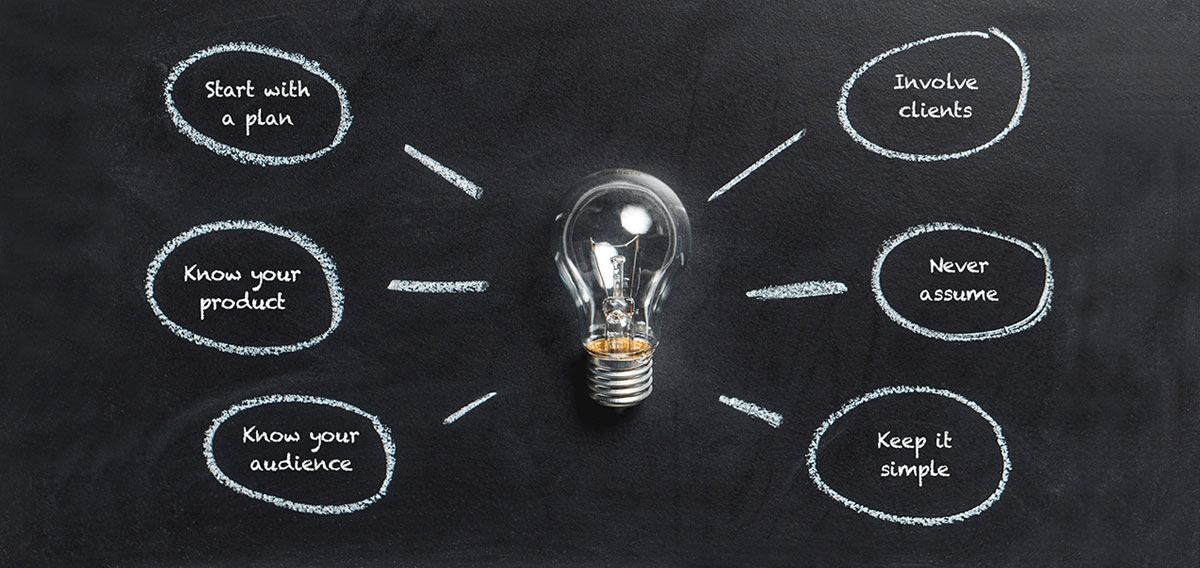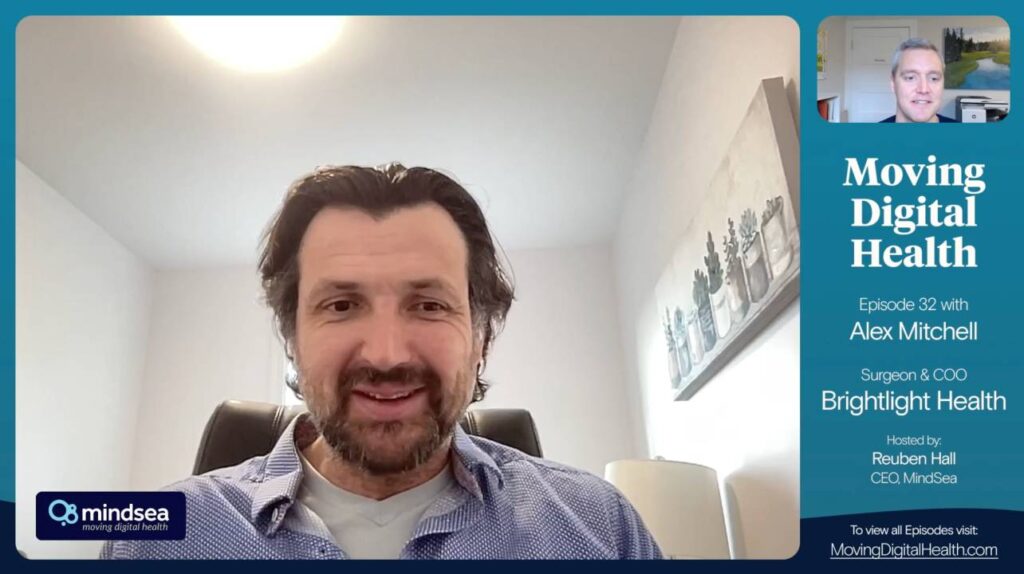Can we tell you a secret?
The more you work at something, the better you get at it.
Mind blown, eh?
Sorry, but isn’t it funny how people often think they should be really great at something the first time they try it? It doesn’t usually work like that!
Having been in the app building game for nearly a decade, we can confirm that being good at what you do takes effort. We work hard day after day to master our craft—and we know at the end of the day there’s always more learning to be done.
If you do something long enough, you tend to pick up tips, tricks and lessons that make the job easier. We certainly have, and we thought we’d share some standout lessons with you today.
So what have we learned after building 20+ iOS and Android apps?
Always Start With A Plan
“Practice safe design: Use a concept.” —Petrula Vrontikis, Graphic Designer

From a young age, you were probably taught that if you want to achieve something in life, you need to start with clear, actionable goals.
This wisdom doesn’t get thrown out the window as you grow up and your goals and plans become more complicated—in fact, it becomes even more important.
When you approach group work at university or project management in your career, you find that a successful outcome is the result of a well thought-out, well-executed strategy.
That’s how you should approach every project, especially an app build: with a plan.
Before you start an app build, you must establish your goals and priorities for the months ahead and make sure that all parties and stakeholders are on the same page.
This is the first step of every new challenge we take on—and the next five steps will reinforce why this first one is vital.
Get To Know Your Product
“Leave it better than you found it.” —Bruce A. Nordstrom, Businessman
You’ve been brought in to help develop an app. Great—but what does that mean exactly?
Are you building an app from scratch? Are you rebranding and redesigning an existing app? Are you building one app or multiple apps? Most important, what does that mean for your goals and priorities?
These are questions we ask with every new client because they inform the way we approach each project from the get-go.
For example, when Postmedia approached us, they were looking for an overhaul of their entire catalogue of apps. This meant redesigning 30+ apps!
Now, we could have just said, “Sure, no problem—30 apps coming right up!” Instead, we started thinking about the product, specifically the ways people consume their news. You see, while modern news is characterized by portability and accessibility, we also knew there are some folks who miss the experience of flipping through a paper while sipping their morning coffee. We thought, How can that feeling be incorporated into this redesign?
The answer was to develop an iPad app with a bigger interface that could deliver that “flipping” experience. This really took the newspaper feeling from print to mobile—but it’s not an approach we would have taken if we hadn’t carefully analyzed the product before diving into the build.
Maybe for your app, you’re taking a product from web to mobile and responsiveness is your focus. Maybe you need audio capabilities, or Wi-Fi, or geo-location, or messaging, or search functionality… Bottom line: You need to understand the scope of your app build before you get started.
Get To Know Your Audience
This is a big one but it can be easily overlooked—or under-executed. Who’s your audience? The obvious answer is your users, the people who currently use or will ideally be using your app. They are the bread and butter of any future success. You have to know what they want because they’re the ones who’ll determine whether your app exceeds its likely shelf life.
The best way to do this? Talk to your users, observe them, survey them—in short, figure out how they’re currently interacting with the product and what’s missing.
What are their expectations? Do they demand high-speed? Do they like customization? In what environment would they typically use your app? All these factors affect how you choose to design your end product.
Now, who else is your audience? What about administrators? Or maybe you’ve got two different categories of users. For example, if you think about on-demand apps, there are people who need a service, and there are people who provide that service.
Our team got some experience with this during our Adam Helps and Trans Canada Trail builds.
For Adam Helps, we needed to incorporate a service provider view as well as a customer view to satisfy both ends of the transaction. For Trans Canada Trail, we had to consider two very different users—in this case, leisure hikers and serious hikers—who could both benefit from the app but would be looking for different end experiences.
Involve Your Clients In The Process

App development, from an agency standpoint, is a collaborative effort between you and the client. You are brought in as the expert on this particular project, but your client has been growing this company for a long time, likely for many years. They know their product or service and their audience better than anyone. That’s why it is so important to pick their brain.
Involving your client in the planning process from the very start makes them feel like a partner (which they are!) and allows them to share insights that you may have never even thought to inquire about.
With our new clients, we often begin with brainstorming sessions during which we discuss the clients’ primary desires and requirements and what “success” looks like to them. We may sketch some initial ideas in those meetings before breaking away and getting down to the nitty-gritty technical work.
Now, although this collaboration is key, remember that you are still the expert. While your clients may think they know what they want, you know what they need, and together you have to find a balance. Be clear about expectations but trust your expertise. The best way to overcome resistance is to be clear and communicate, communicate, communicate!
Never Assume Anything
Don’t design your app on the basis of a gut feeling.
Don’t fall back on an option because you’ve failed to find the right option.
Keep digging. The best way to get to your end goal is through thoughtful planning, careful consideration of your options and logic-driven decisions.
In app design, this logic stems from research. Conducting UX research arms you with the knowledge you need to design an app that meets and exceeds your users’ expectations. Data and analytics, ratings and reviews, interviews and focus groups—this is how you develop an app that your users are looking for.
With every decision you make, you should be asking, “Why?” and “Does this make sense?” Back up your choices. Having a concrete, research-based rationale for every decision is how you overcome objections when you present to your client.
Also, remember to check in along the way so you don’t veer from your client’s vision. Put your head down and work, but set up checkpoints to regroup with your client and make sure you’re still on the right path.
Just Keep It Simple
“Simplicity is the ultimate sophistication.” —Leonardo da Vinci, Artist
An app doesn’t need to be complicated—in fact, the design shouldn’t be complicated.
Sometimes less is more. The less clutter, the better. The less noise, the more users can focus on the functionality of the app. The best designers know that bells and whistles don’t automatically add up to a better product, and all the fluff in the world cannot disguise poor usability. Keep your navigation simple, keep your colors simple, stick to clean lines, and make use of white space.
Remember too that not all your good ideas have to be included—after all, an app is never really finished. We always keep this in mind when building our apps. Though we often have many ideas, we know that not everything needs to be presented in the very first iteration. There will be future opportunities to expand and improve.
Present your best work and let the rest fall into place as it may.
Conclusion
So what have we learned after building 20+ apps?
A lot!
To break it down again:
- Always Start With A Plan
- Get To Know Your Product
- Get To Know Your Audience
- Involve Your Clients In The Process
- Never Assume Anything
- Just Keep It Simple
In order to continually get better at anything, including app development, you’ve got to be open-minded and embrace every new opportunity as a learning opportunity.
This is how we work, and if you need help on your next app build, we’d love to work with you. Get in touch with one of our Product Specialists today!



